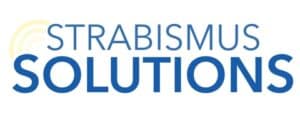
After patching for a few months, I started looking for another way to patch that was still effective but didn’t interfere so much with my life. Not that patching isn’t great, but… it is the worst. Just imagine trying to exercise, fix hair and makeup or chase kids around all while wearing a patch. It presents challenges for sure.
My solution was a contact lens that blocked vision in my strong eye. In the process of cold calling a ton of local Optometry offices, looking for someone who could tell me more, I was told about a local vision therapy office. I had never heard of vision therapy, but after a little bit of google research, I called and scheduled an appointment with Idaho Vision Development Center.
You can read all about what to expect at the first few vision therapy visits on my post over here. It goes through the initial consult, subsequent testing and the big meeting where your treatment plan and cost are revealed.
I’ve spent my entire life not really understanding my eyes. I’ve known that there are problems, I’ve known that one side is more blurry, I’ve recognized the cosmetic squit and shift, but I didn’t understand how or why it was happening. When people asked, I honestly didn’t even know what to say. I tried to explain some of the struggles I was experiencing to my husband, but I couldn’t put it into words. (If you are struggling with the same thing, take this free quiz to help you understand!)
Ophthalmologists were excited to help fix things cosmetically, which I appreciate and will save as a last resort. Most Optometrists told me that my vision was great as is or that patching could strengthen my eye.
Then I met with a Developmental Optometrist at a Vision Therapy office and for the first time, there was a professional who not only listened to my concerns but had answers and solutions that finally made sense to me.
He wasn’t afraid to tell me that I don’t see the world as other people, that I lacked stereo vision, and that it is a big deal that makes a huge difference.
Side note: Stereo vision is also known as stereopsis or 3D vision. It is the ability of the brain to combine the left eye image and the right eye image into one three dimensional

Left Eye View 
Combined View 
Right Eye View
He explained that in the absence of stereovision I had learned to see depth and the world around me using other cues from my surroundings like shadows, size, and perspective.
While usually effective, these skills I’ve developed don’t work as well at night. At night, shadows are distorted and I can’t see telephone poles, fences, or houses that I generally use to judge distance. It explained why I struggle so much with night time driving and judging distances in the dark.
Just being understood and finally finding an eye doctor who didn’t treat me like I was a crazy person was enough to convince me to try vision therapy. Then he took out his fancy tools and I was sold.

I had recently gained control over my weak eye (read about it here), but it required so much effort and concentration. When he tried the Worth Four Dot Test with me and was able to make my eyes switch back and forth without me trying I knew that if there was anyone that could help me with my vision, it was going to be Dr. Dan!
I didn’t know how he was going to help, I didn’t have any idea about the philosophy of vision therapy. I didn’t know about weekly visits and homework. I definitely had no idea about the cost. But sitting in the office that day, I absolutely knew that vision therapy was the answer I had been looking for.
I went through two hours of testing to get starting points for different aspects of my vision. Read more here. After the testing, I started going in every 4-6 weeks to build a strong foundation for when I would start official, weekly therapy. Read about my first treatment plan here.
